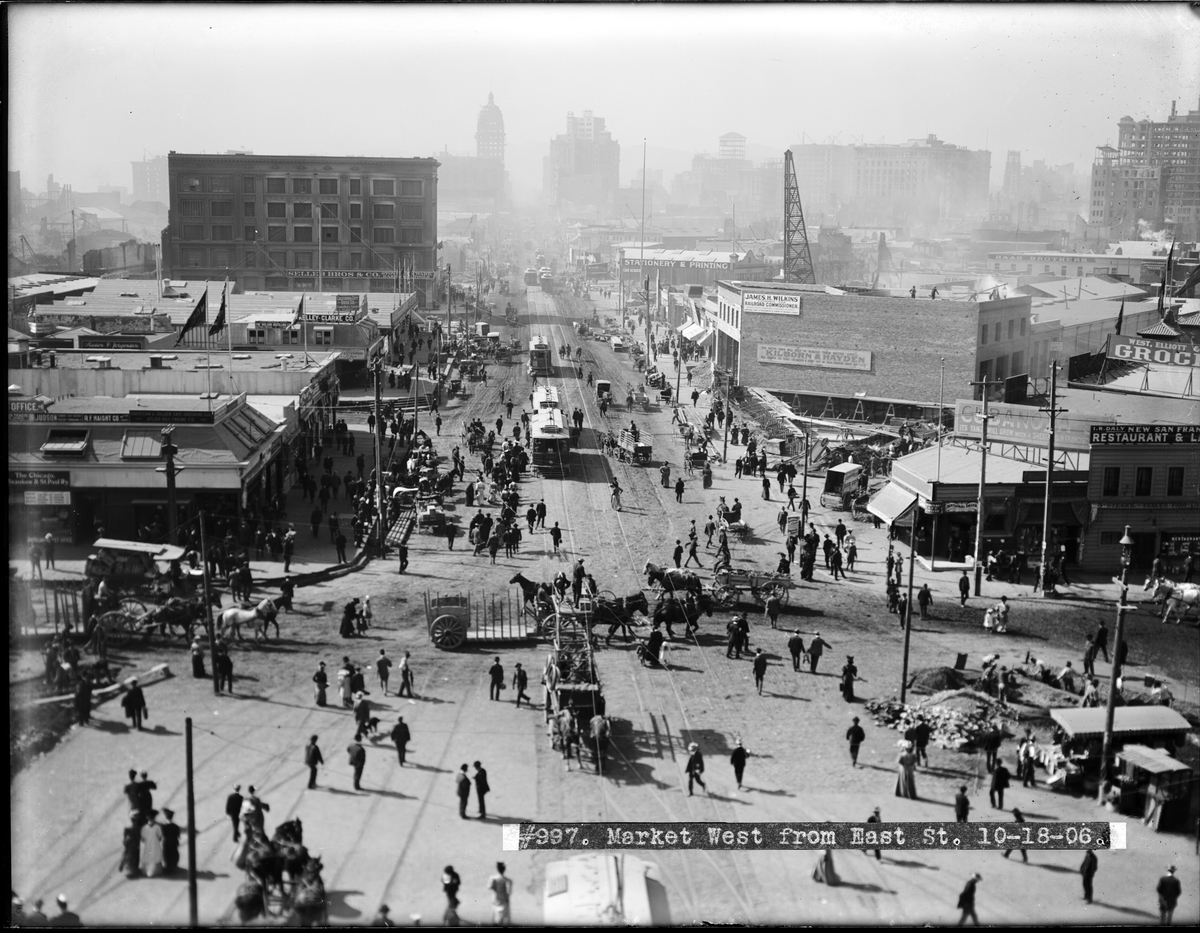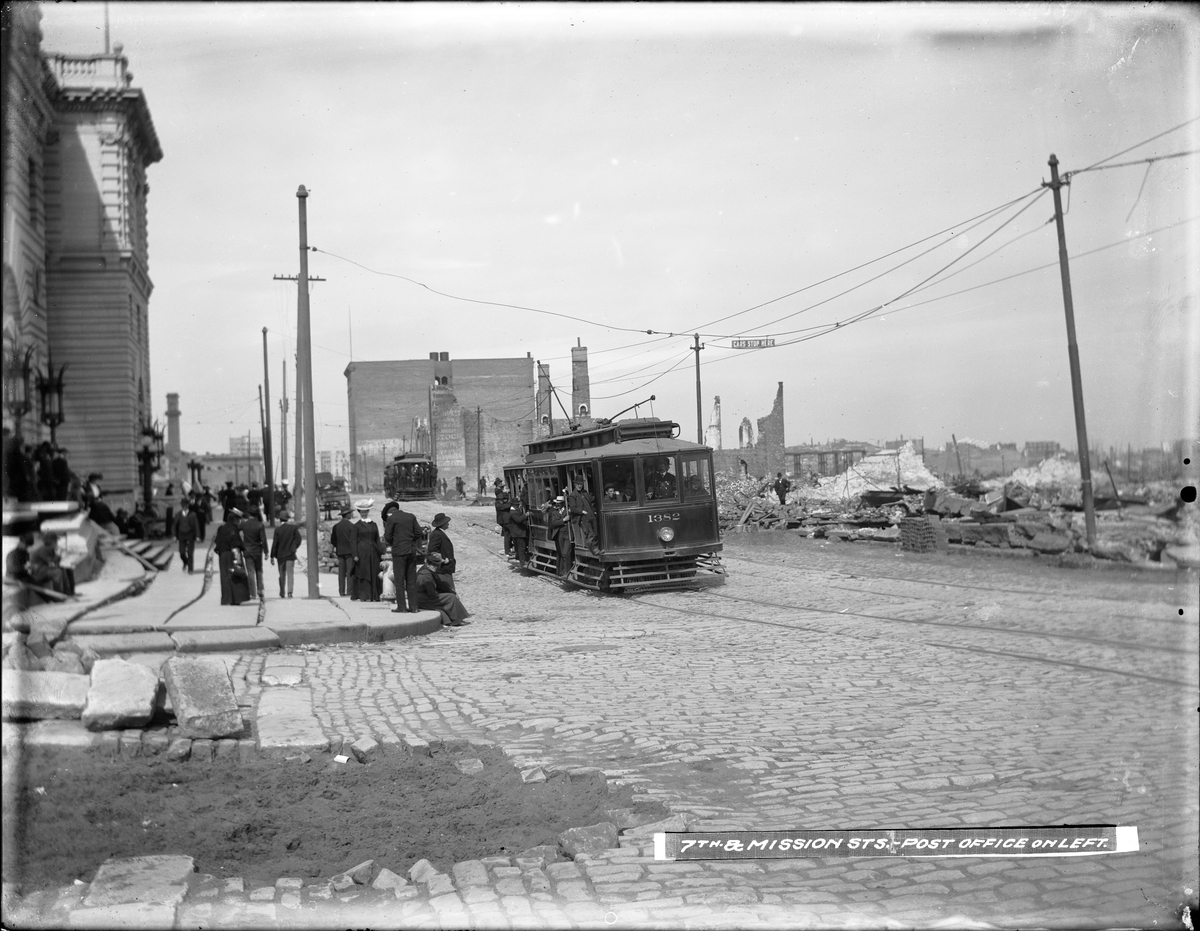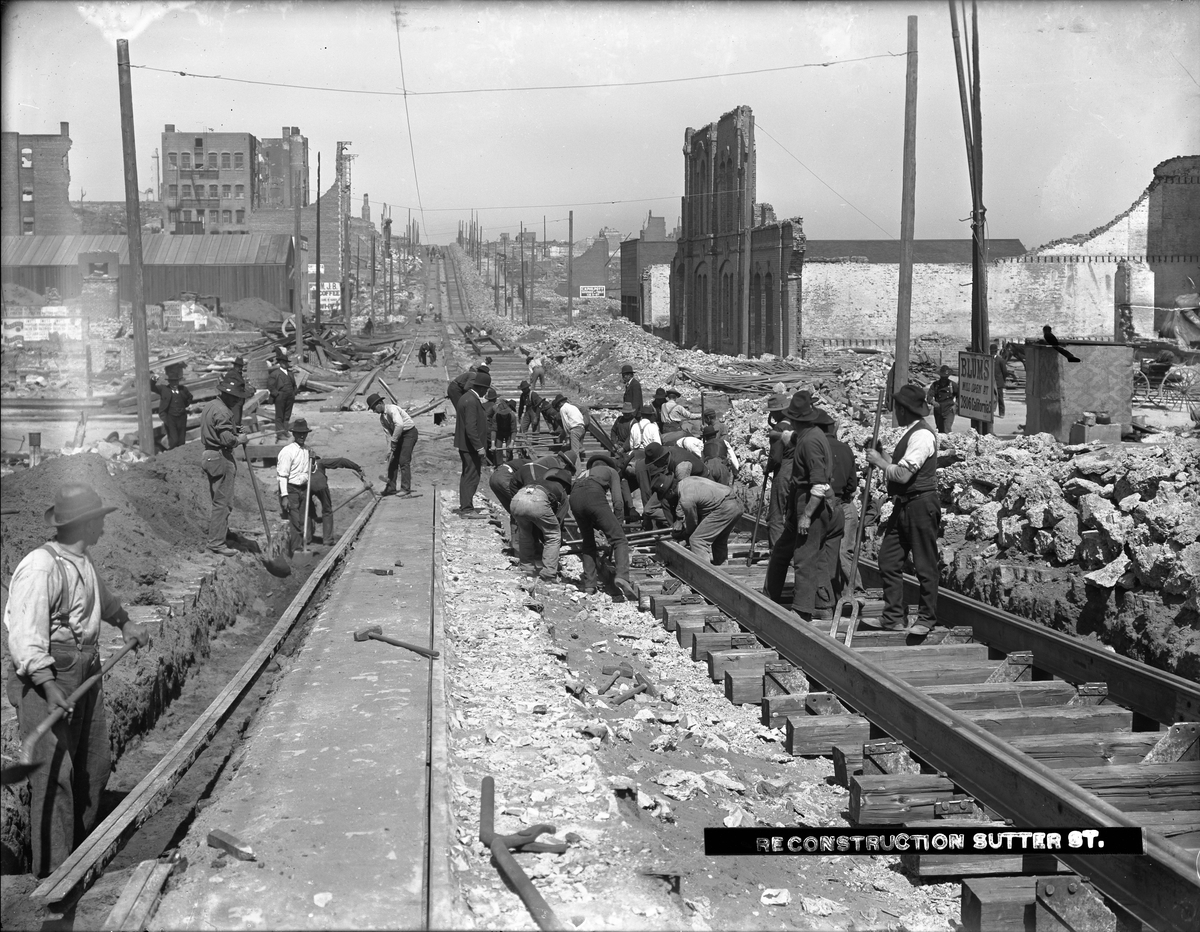Last week, we released a large collection of photographs of the 1906 earthquake and fires in commemoration of the 109th anniversary. This week, we bring you the second half of that story: the feverish reconstruction effort to rebuild our transportation network and with it, our city. Reconstruction took decades, but the earliest work depicted in the photographs below to restore and improve vital transit service ensured that people could move forward to put their lives, homes and businesses back together.

Looking Down on Market Street From Ferry Building | October 18, 1906 | U00997
In an era before widespread use of telephones and automobiles, San Franciscans relied on public transit to conduct their day-to-day lives. Public transit delivered the mail, brought people to and from work and stores and connected the outer parts of town with the nerve center of the city: the Ferry Building and downtown. When the 1906 disaster struck and nearly the entire city was destroyed, including most of the transit infrastructure, people were severed from their daily necessities and the outside world.

Streetcar 1382 with Passengers in Earthquake Damaged San Francisco in Front of the United States Post Office | May 9, 1906 | U00816
Public officials knew that rebuilding San Francisco would not be possible without reliable, modern public transit to get the citizens of the city back on track with their lives. To make this happen, Mayor Eugene Schmitz and the United Railroads company (who ran the majority of transit at the time) worked quickly to restore vital service by allowing the company to convert many aged cable lines to electric streetcar operation. Conversion to electric meant improved service with faster, larger cars and lowered operating costs, which helped the company spend more on reconstruction efforts.

Track Reconstruction on Sutter Street Near Van Ness | June 13, 1906 | U00850
Within two weeks, on May 2, streetcar service on Market Street was restored, and in several months, many former cable lines were on their way to becoming streetcar lines. Just as building public transit helped spread the city outwards to districts like the Sunset and Richmond, in the time following the 'quake, transit helped pull the city out of the ashes and reconnect people with their lives.
Be sure to follow the SFMTA Photo Archive on Flickr, Twitter, Google+, and Instagram!